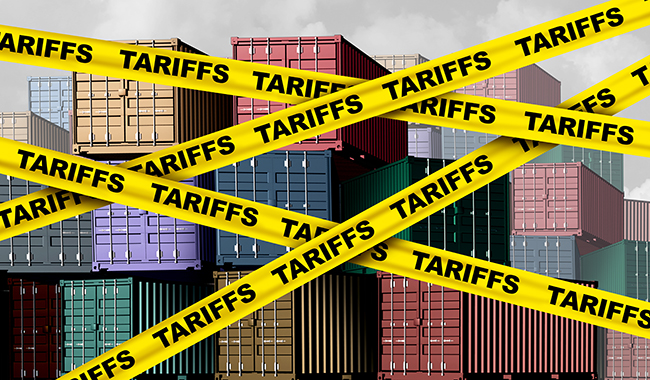
The Bottom Line: Companies are adapting in different ways to the new tariff environment. Industry leaders say that mass layoffs could be a long-term effect, and advice includes working closely with vendors and diversifying your supply chain.
Tariffs imposed by the Trump administration continue to take over news headlines as businesses and consumers prepare for anticipated price increases, longer lead times and other issues. So, how will these tariffs impact the glass industry and its related partners?
Near-term effects
Adrian Edge, director of codes and regulatory affairs for Fenestration Canada, says that in talking with members across Canada, immediate impacts of these tariffs include layoffs, delayed expansion plans and "a staggering amount of confusion on navigating the border."
"On the positive side, there's a fair bit of quick adaptation, including beginning the process of swapping suppliers to prioritize either Canadian made goods or goods abroad. In the next few months, based on what I've heard, I'm expecting that many of the U.S. contracts with Canadian companies will be on thin ice and who holds the cost of the duties will be less clear than most would like," says Edge.
Scheduling and Purchasing Manager for Winco Window Co. Brian Kowalski says that so far, Winco has not seen many issues regarding the tariffs being implemented. Aluminum extrusions are one of the company's larger weekly purchases, primarily coming from within the U.S., and those vendors have not passed on any price increases because of them.
Kowalski adds that Winco has one product line that has extrusions produced in Canada, less than 2% of its total aluminum purchases, so Winco will be charged a tariff based on the company being the "importer of record." Winco leadership is currently working with a broker to handle all paperwork regarding this. However, Kowalski says that aluminum has gone down in price over the last few weeks as demand has slowed.
"We have one hardware vendor that assembles the product in Mexico and have implemented a 1.88 % tariff surcharge. Although the tariffs may not be directly affecting us, we are facing the fact that some customers are waiting to see what happens with the economy before releasing their project as a result," adds Kowalski.
In response to the 125% tariffs imposed on Chinese-made glass machinery, Xinglass reps said in a statement that it is taking several proactive measures:
- Optimizing internal costs to absorb part of the tariff burden
- Providing flexible commercial terms for key clients
- Enhancing technical guidance and technical support to improve production output
“In challenging times, true partnerships are tested,” says Zhenghong Zhu, general manager of Xinglass. “We want our customers to know that Xinglass is not just a supplier, but a team member dedicated to their success.”
Long-term effects
As for the long-term impacts of tariffs, Edge says it all comes down to how far this trade war escalates and how long the tariffs stay in place.
"I expect if this continues for the next couple of years, two sides of a coin will present," says Edge. "The first is mass layoffs, businesses closing, and consumer goods inflating fairly quickly. The second side is long-term adaptation. Canada will put into place a variety of self-sufficiency projects to ensure our raw resources are processed here instead of in the U.S."
Edge adds that he also expects to see a diversification of Canada's purchasing and sales to Asian and European markets. The building market in Canada, if this is a prolonged endeavor, will be depressed until some of those adaptations can take root.
"The fenestration market is going to have an uphill battle to stay afloat, given most of our manufacturers are small to medium-sized businesses. I'm deeply concerned about attrition and, with an opening of our market, losing the incentive to build additional businesses due to offshore product competition. If we can keep the businesses alive for the next couple of years and put some safeguards into place for our supply chain, we may come out better than we currently are. That's a tough ask, but I'm confident with some support, the industry can weather it," says Edge.
As for how to weather these changes, Edge provided the following advice:
- Learn more about the harmonized code system (HS) and International Commerce terms (Incoterms). This will be critical to get an understanding of border management and to be more agile with purchasing/sales and use the systems in place to mitigate duty liability.
- Make the review of your supply chain a strategic initiative to be acted upon immediately.
- Create plans for what one, three and five year(s) of this kind of impact look like based on current knowledge. Hopefully, actions related to a long-term impact and short-term impact and that also align with the company's values can be highlighted and put into motion.
- Find a knowledgeable broker to help you understand new importing requirements.
"I don’t believe these new tariffs will remain in place very long, at least not at these elevated levels," says Kowalski. "I think a long-term positive that can be learned from this is the importance of a good working relationship with your vendors and having multiple options available is always important. We have also purchased equipment to bring in some services that otherwise would have been bought out from external sources. This helps control not only cost but lead times as well."